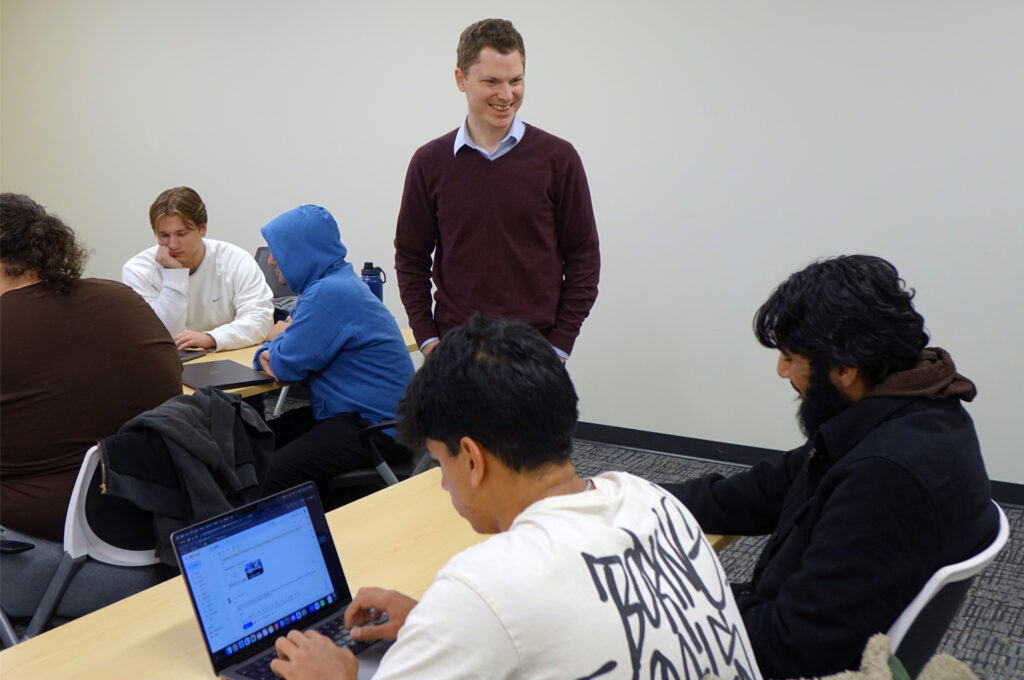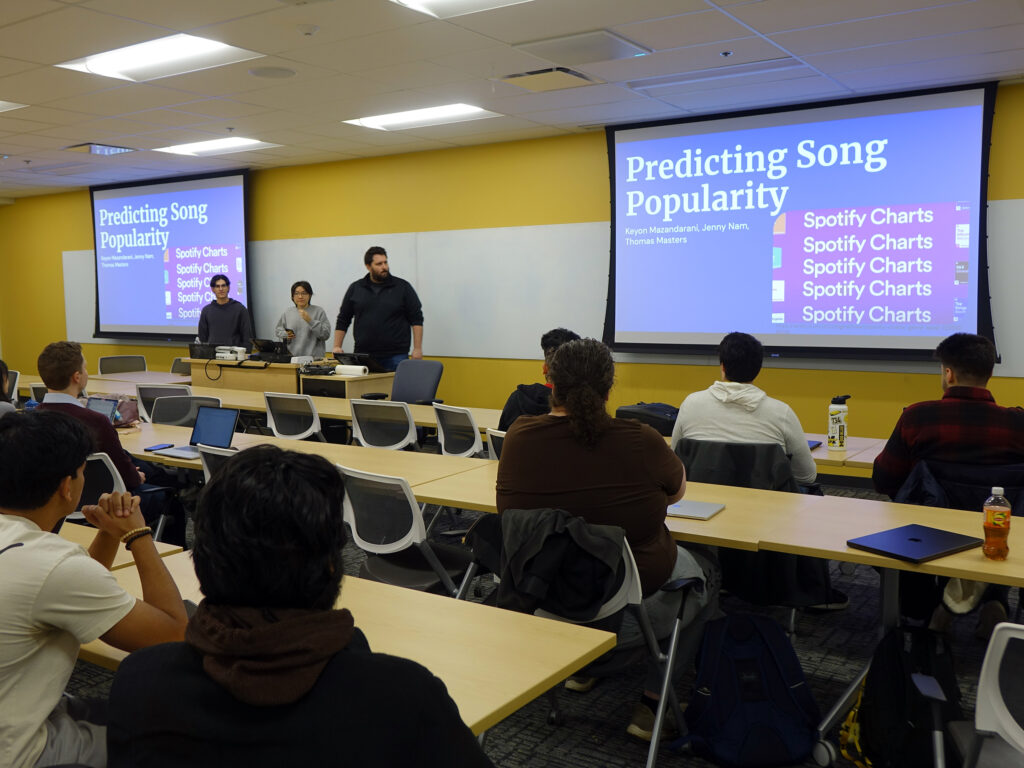New course helps transfer students acclimate to Michigan, build connections

Students who transfer from another institution to a program administered by the Computer Science and Engineering Division (CSE) at U-M have their hands full – and are often uniquely challenged. A new course taught by Dr. John Kloosterman, a faculty member at CSE, aims to help students make this transition more successfully by providing a number of supports.
“Students who transfer into our programs generally arrive without having the orienting experience that first year students receive at the university,” said Kloosterman. “They haven’t built the personal networks, made the campus connections, or experienced the context of taking courses at Michigan that traditional students have. For these reasons, imposter syndrome and managing workloads can be real challenges for transfer students.”
In an effort to improve the transfer student experience, a group including Kloosterman, CSE undergraduate advisor Taylor Bruns, CSE Project Manager Taj Williams, current transfer student Hae In Lee, and Elizabeth Levesque (Program Manager, Center for Research on Learning & Teaching) worked in the Summer of 2024 to create EECS 298-001: Transfer Student Studio, a course for new transfer students who are taking EECS 280, Programming and Introductory Data Structures. Kloosterman taught the course for the first time in Fall 2024.
The studio course provides opportunities for students to find project and study partners, to make connections to resources at U-M, and to to draw connections between the skills taught in EECS courses and real world apps and websites.
The course also helps to prepare students to participate in the engineering career fair for purposes of obtaining summer internships, both by hosting guest talks on many Fridays from different offices at the university and by creating an opportunity for the students to have a portfolio piece to share with hiring companies. Kloosterman also meets with students during office hours on a regular basis to go over exams and talk about career goals. He tries to remain as accessible as possible for the cohort and often stays after class chatting with the students.
“The Transfer Studio class was my favorite one last term,” said Nick Stenman, who transferred from Delta College to U-M in Fall 2024. “It was a smaller group, and we got to know each other and chat. Plus Dr. Kloosterman was always present and very helpful in class and during office hours.”
The course began with a review of C++ concepts, since C++ is used in EECS 280, and with background on machine learning. Shortly after, the students organized into small groups to work on a research problem that they address and report out on at the end of the course.
Regarding his project, Nick said that it was unlike anything he’d done previously. “My previous coding classes didn’t have projects this in-depth. It was cool to get a machine learning project right away, but it was also kind of over my head. With Dr. Kloosterman guiding us through the initial parts, it really helped and now I feel like I’m better prepared to take another higher level machine learning class in the future.”

Fourteen students enrolled in the first offering of the course, including four from two-year programs and ten from four-year schools. The projects they created in the class included a Starcraft ELO analysis, a project predicting student success vs. university size, another predicting emotions behind tweets, a fake news classifier, and a classification system for predicting song popularity.
Following are additional quotes from students about their experience with the course:
“The experience in the transfer studio helped me settle in during the chaotic and stressful transition period. It served as a haven for my EECS 280 class as well. I could come ask questions about topics that overlapped between the classes.”
“The transfer studio helped me meet the need of finding a group of individuals in the same boat. Sure, there are initiatives across campus like Transfer Connections but those usually meet on a weekly or monthly basis and not everyone keeps attending. In the transfer studio, you meet people who are similar three times weekly!”
“If the transfer studio course wasn’t available I would have struggled with creating connections since my other classes were very large and intimidating.”
“My favorite part of the transfer studio has been the small tight knit community it became. Transferring to this school has been harder than I honestly thought it would be and being around other transfer students and getting to know some of them better really helped me navigate this semester. Being able to connect with Prof. Kloosterman about my classes and other general things that were happening throughout the semester was a huge plus.”
“The transfer studio course was a great class and I greatly enjoyed it. It was more than just a class and allowed me to adjust to UMich and provided the opportunity to explore different topics in computer science and different subjects and courses at UMich.”
“Taking this course was a great experience as a transfer student; the supplementary instruction, external resources, teamwork, and the challenging and unique project experience were all very helpful for me to adapt to the new environment both mentally and academically.”
 MENU
MENU 
